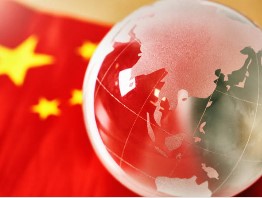Towards Development and Progress: Building Economic Partnerships for a Common Future

The world today is undergoing profound changes, marked by rapid globalization and regional integration. Countries are becoming more interdependent, with their interests more closely intertwined. Pursuing peace, development, and cooperation has become the dominant trend. Yet, the world is far from stable. The question now is how we can collectively confront these challenges while safeguarding world peace and promoting common development.
China’s economic resilience is evident, bolstered by the vast market potential of its 1.4 billion people and supported by robust governmental policies focusing on high-quality development. For many countries, strengthening economic ties with China has become crucial. The country’s approach to shared development is transforming economies worldwide, fostering closer ties between countries, and promoting a vision of common prosperity.
China’s experience in reform and opening up has not only benefited its people but also significantly contributed to global economic growth. As China continues to develop, its market and overseas investments will further stabilize and boost the global economy. China’s model of economic openness is built on mutual benefit and complementarity. China has consistently managed trade frictions, improved market access, and optimized its trade structures in adherence to international trade rules. This comprehensive opening-up is the foundation of China’s vision of building a global community of shared futures where every nation benefits from development.
The Belt and Road Initiative (BRI) and Global Connectivity
China’s Belt and Road Initiative (BRI) is a cornerstone of its global economic outreach. BRI promotes policy, infrastructure, trade, financial, and people-to-people connectivity across the globe. From 2013 to 2022, the cumulative value of trade between China and BRI countries reached a staggering US$19.1 trillion, growing at an annual rate of 6.4%. China invested US$240 billion in partner countries, while Chinese contractors signed construction contracts worth US$2 trillion. This infrastructure-driven approach has deepened economic ties, increased investment flows, and created new trade opportunities, particularly for developing economies.
China has further strengthened these efforts by establishing the Silk Road Fund (SRF) and the Asian Infrastructure Investment Bank (AIIB), both of which play vital roles in funding BRI projects encompasses transportation, energy, public health, and digital infrastructure, contributing to global economic connectivity.
China’s BRI also aims to foster cooperation in emerging fields such as green development, digital economies, and technological innovation. These efforts are essential to addressing pressing global issues like climate change, food security, and public health challenges. The Global Development Initiative (GDI), Global Security Initiative (GSI), and Global Civilization Initiative (GCI) are further developments of China’s vision for a shared global future.
One of the most striking aspects of China’s international approach is its emphasis on bottom-up development financing. For decades, top-down approaches to development have struggled to keep pace with the growing demands of the global economy. In response, China has promoted regional and national development initiatives that prioritize local input and cooperation. The country’s commitment to fostering a more integrated global economy is evident in its support for cross-border trade, investment, and tax reform.
China continues to promote global trade through platforms like the China International Import Expo (CIIE), the world’s first national-level import-themed expo. Over five years, CIIE has facilitated business transactions worth nearly US$350 billion, making it a key platform for international procurement, cultural exchanges, and investment promotion. Alongside CIIE, events like the Canton Fair, the China-ASEAN Expo, and the China-Eurasia Expo are instrumental in boosting international trade and cooperation. These platforms have expanded China’s influence in global trade, fostering closer ties with countries across Asia, Africa, and Europe. China is driving industrial cooperation, particularly in traditional industries like steel and energy, while also venturing into emerging sectors like 5G technology, digital economies, and new energy vehicles by hosting major expos and trade fairs.
South-South Cooperation
China’s focus on South-South cooperation is another cornerstone of its international strategy. China’s win-win approach to global trade has attracted widespread support from developing nations, who see China as a partner that respects their sovereignty while promoting mutual growth. China’s contributions to the development of the Global South are vast. From infrastructure investment to education and healthcare, China has played a pivotal role in supporting modernization efforts in countries across Asia, Africa, and Latin America. China has mobilized financial resources and expertise to address key development challenges through various mechanisms. The country’s adherence to the Five Principles of Peaceful Coexistence also underscores its commitment to promoting sustainable growth and stability in the Global South.
China is laying the groundwork for a more inclusive and prosperous future by continuing to promote economic partnerships and build stronger networks. Whether through investment in infrastructure, fostering industrial cooperation, or supporting technological advancements, China’s efforts are aimed at creating a global community where every country can share in the benefits of development. As countries around the world face growing economic challenges, China’s model of open development offers a path forward and helps to shape a future where development is accessible to all.


